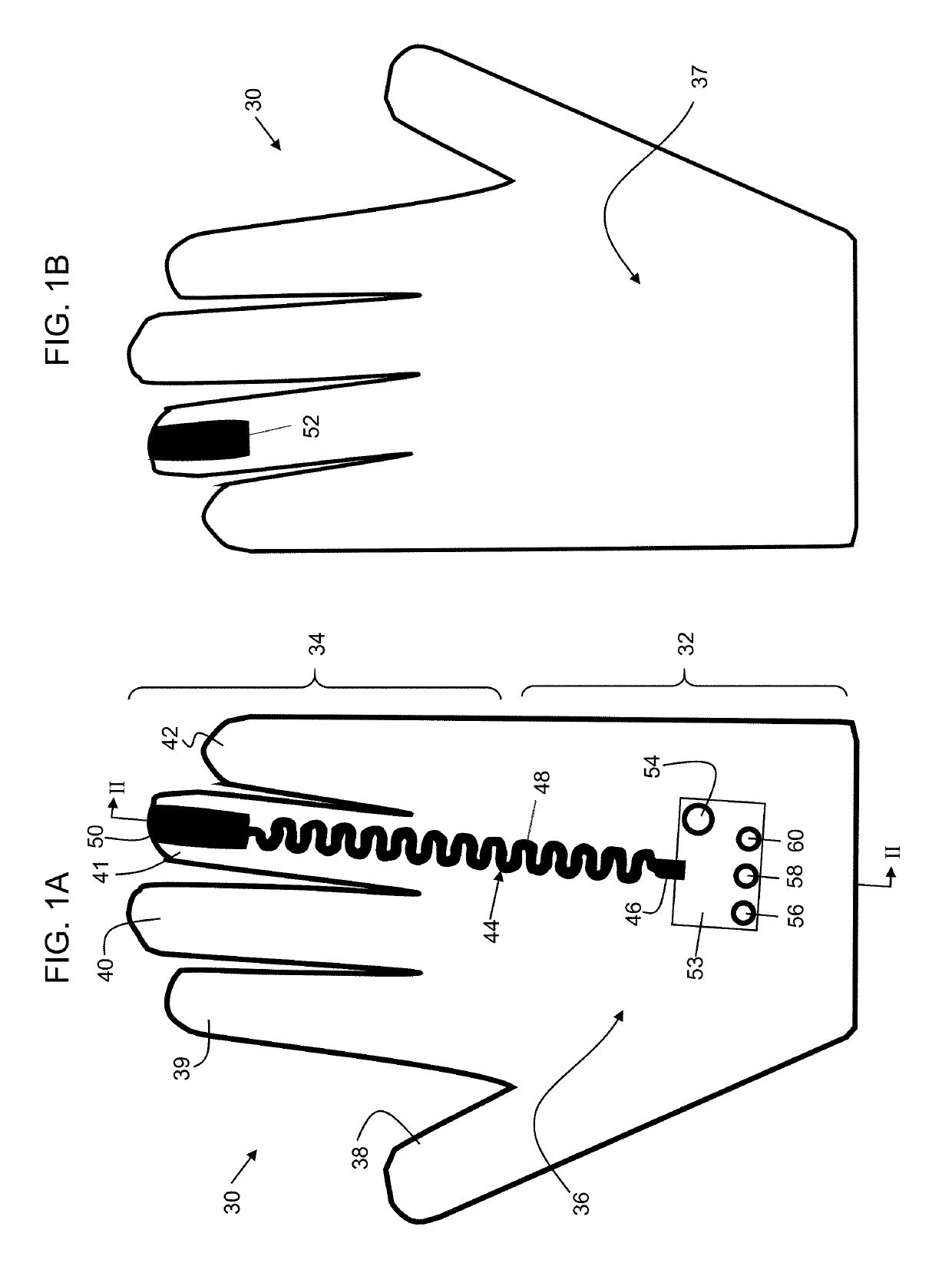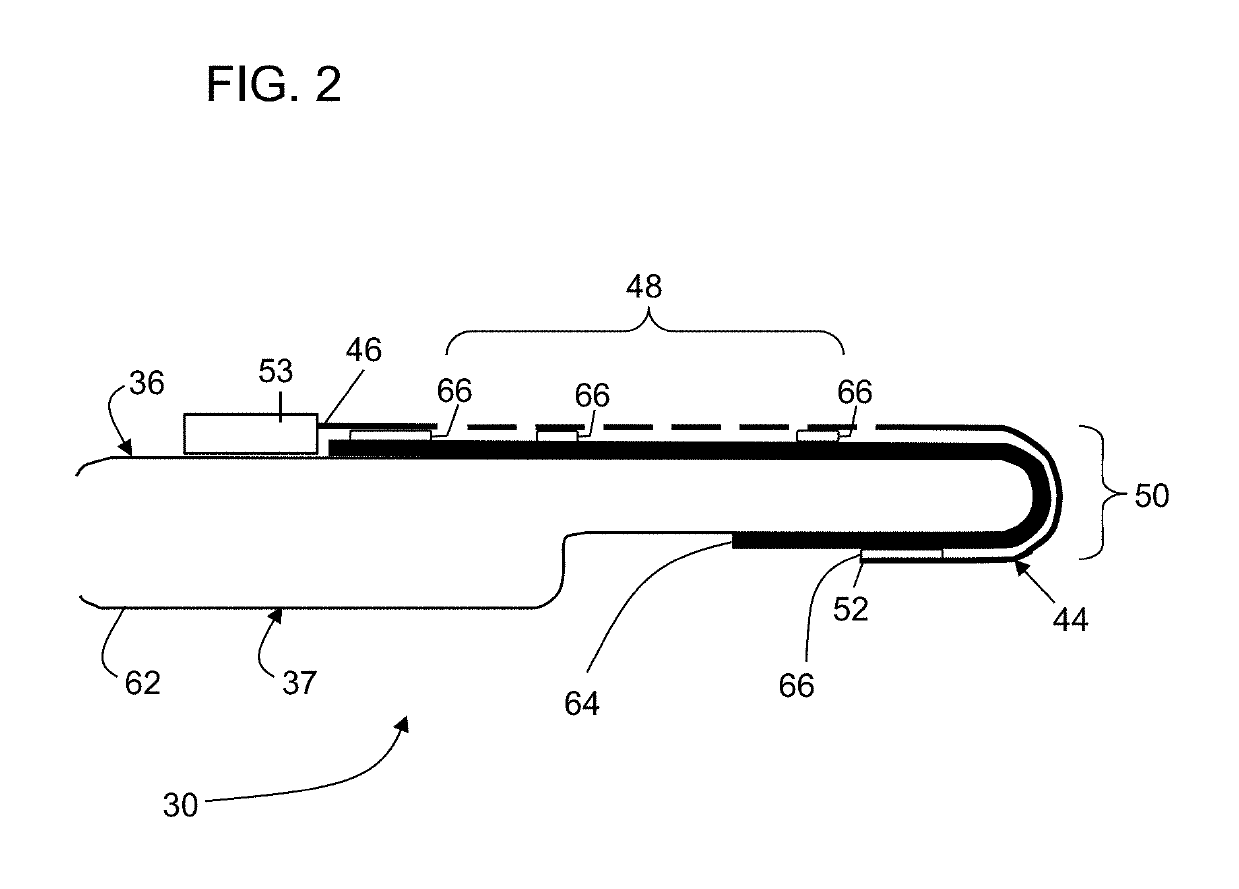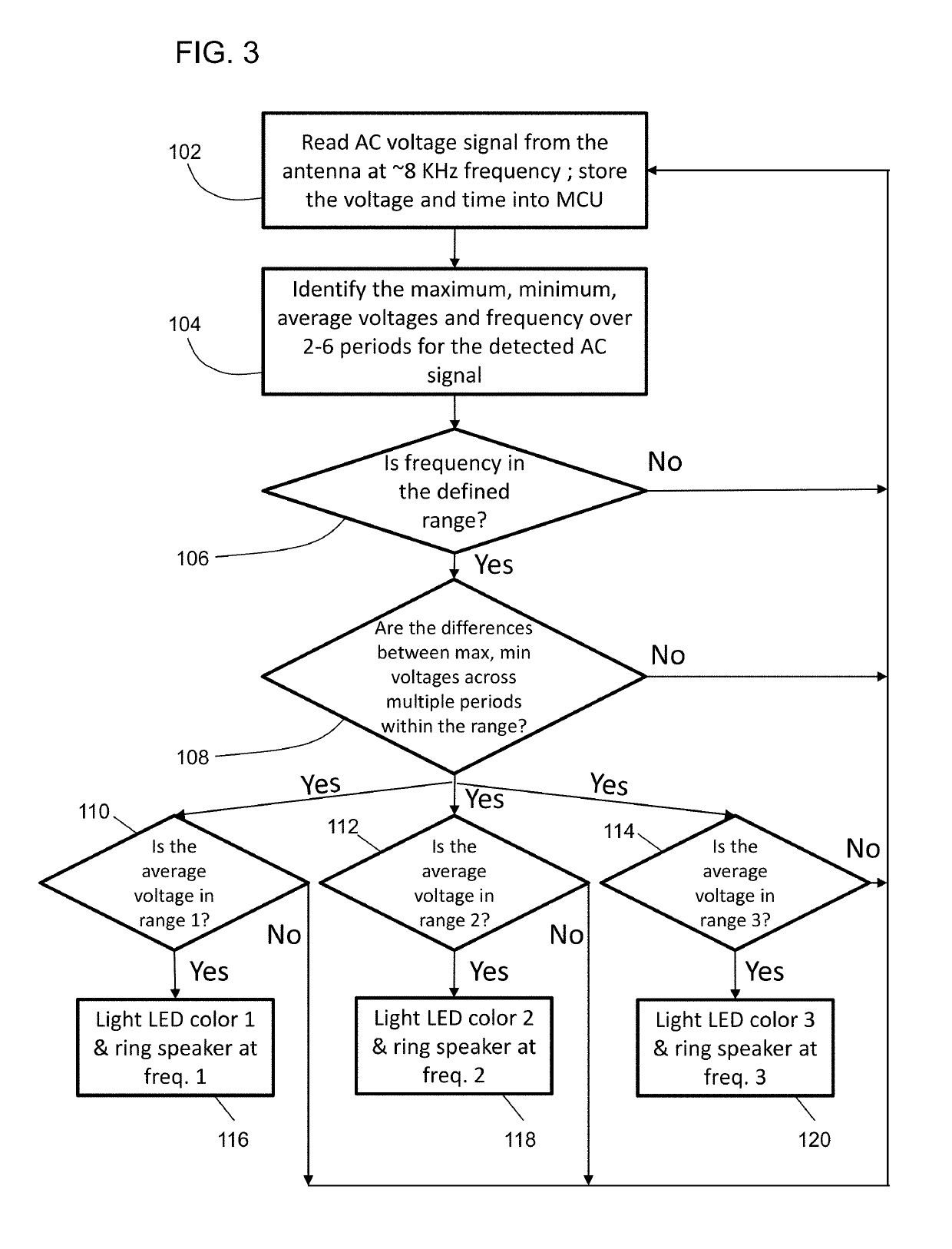Voltage detecting glove
a technology of voltage detection and glove, applied in the field of voltage detection glove and system, can solve the problems of indirect danger, immediate and apparent danger, and even death by electrocution or other deleterious secondary effects
- Summary
- Abstract
- Description
- Claims
- Application Information
AI Technical Summary
Benefits of technology
Problems solved by technology
Method used
Image
Examples
example 1
Numerical Simulation of the Effect of a Buffer
[0041]The effect on sensitivity of interposing a low dielectric constant buffer between the antenna and the glove liner, and thereby spacing the antenna away from the wearer's fingers, is simulated numerically, using the circuit 10 of FIG. 4 as a proxy, wherein the various sources of resistance and capacitance are treated as lumped components. In particular, the circuit elements in circuit 10 are as follows:[0042]Vs: AC sinusoidal source, 120 Vrms / 60 Hz[0043]C1: source to antenna capacitance[0044]C2: source to body capacitance[0045]C3: antenna to body capacitance[0046]C4: body to ground capacitance[0047]R1: antenna to body resistance (DC)[0048]R2: body to ground resistance (DC).
[0049]Numerical values of C1 and C2 are calculated as a function of distance between the voltage source and the antenna. C1 was calculated using finite element method (REM) modelling with Comsol Multiphysics Modeling Software (version 5.3, COMSOL, Inc., Burlington...
example 2
Comparative Example 1
Testing of a Voltage-Detecting Glove
[0057]A voltage-detecting glove was constructed generally in accordance with the description of FIGS. 1-2 above, and thereafter tested to characterize it ability to detect energized AC wiring.
[0058]The glove for Example 2 comprised a glove liner of 0.36 mm-thick Kevlar® para-aramid fiber and a buffer that was fabricated with fire-retardant cotton fabric approximately 3.6 mm thick and shaped to conformally fit a human hand. An antenna was formed of a 12 μm thick Pyralux® polyimide film having a conductive copper layer 12 μm thick and secured to the outside of the inner cotton layer. The antenna extended from a proximal end situated on the back side of the proximal portion 32 and thence along the back side of the third (ring) finger of distal portion 34 in a meander pattern. A solid end section wrapped around the tip of this finger portion and terminated at a distal end on the front side at a location approximately even with the...
PUM
 Login to View More
Login to View More Abstract
Description
Claims
Application Information
 Login to View More
Login to View More - R&D
- Intellectual Property
- Life Sciences
- Materials
- Tech Scout
- Unparalleled Data Quality
- Higher Quality Content
- 60% Fewer Hallucinations
Browse by: Latest US Patents, China's latest patents, Technical Efficacy Thesaurus, Application Domain, Technology Topic, Popular Technical Reports.
© 2025 PatSnap. All rights reserved.Legal|Privacy policy|Modern Slavery Act Transparency Statement|Sitemap|About US| Contact US: help@patsnap.com



